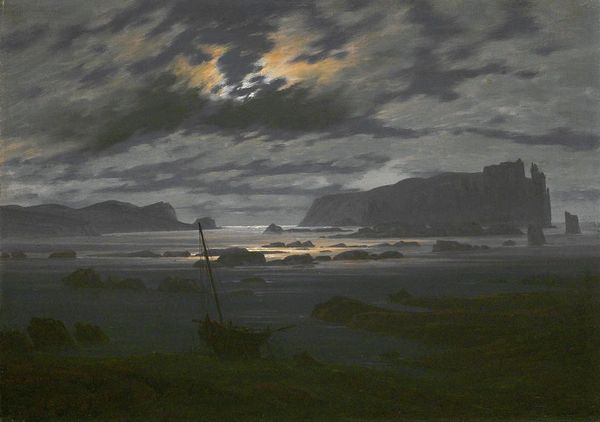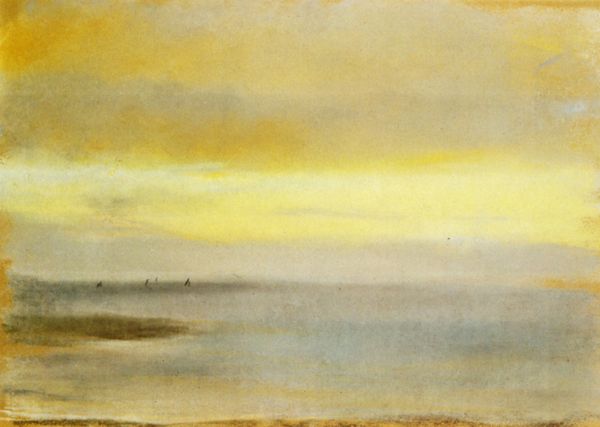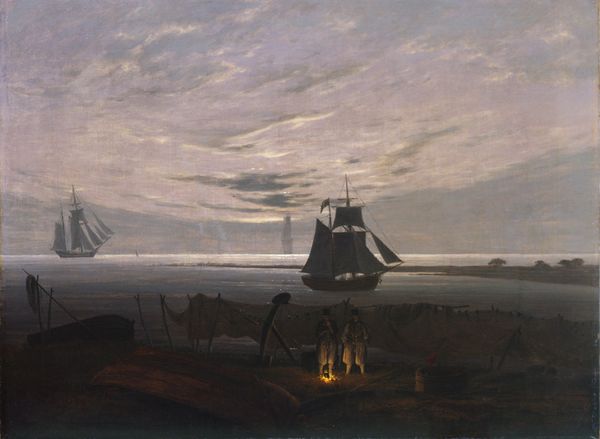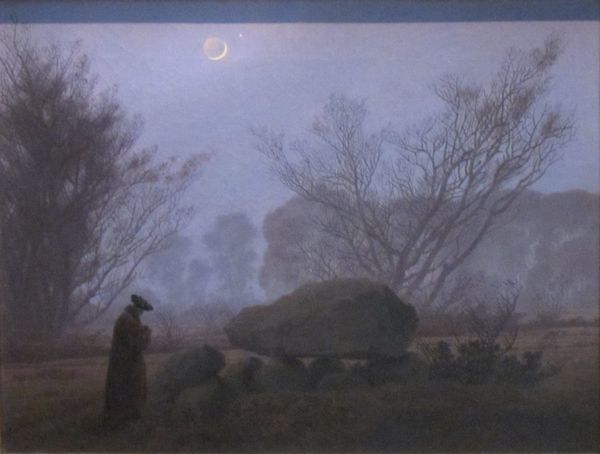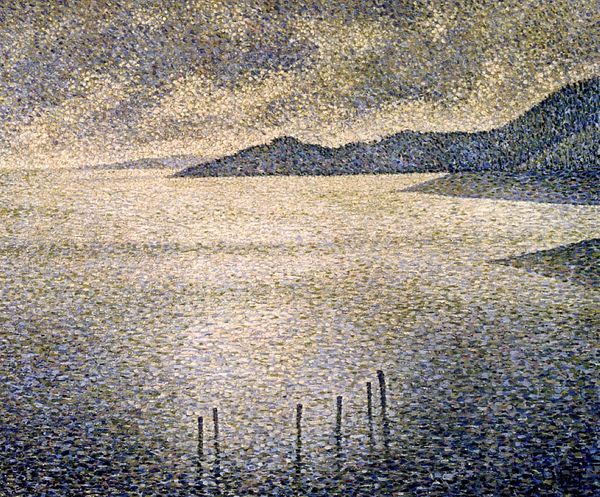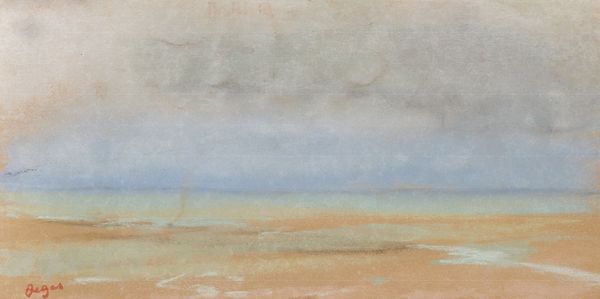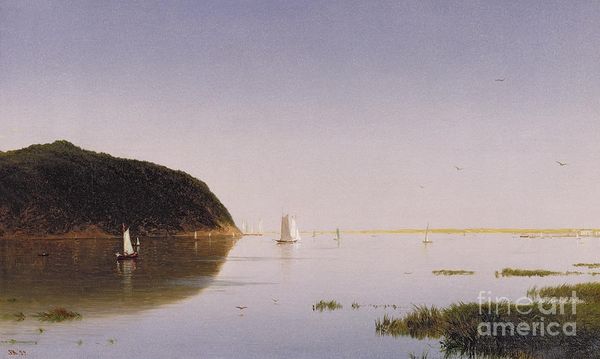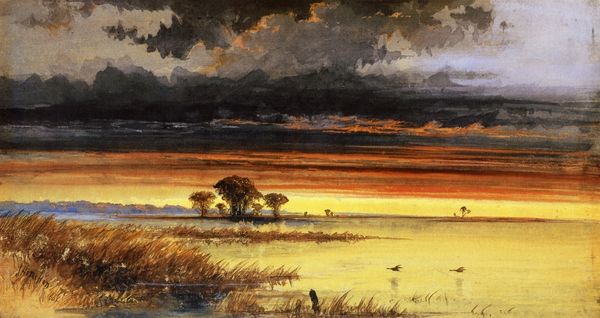
Flat country shank at Bay of Greifswald 1834
0:00
0:00
caspardavidfriedrich
Museum Georg Schäfer, Schweinfurt, Germany
painting, plein-air
#
painting
#
plein-air
#
landscape
#
romanticism
Copyright: Public domain
Editor: Caspar David Friedrich’s "Flat country shank at Bay of Greifswald," painted in 1834. It's remarkable, such muted tones! I'm drawn to the stillness, but there's something a bit…melancholy in its quietude. What draws your eye in this piece? Curator: It is primarily the interplay of light and form that arrests my attention. Observe the atmospheric perspective. Friedrich masterfully manipulates tonal gradations to create depth. The clouds, the water, the land – each plane is carefully distinguished through subtle shifts in value. It generates a visual harmony but simultaneously keeps a balanced tension. Note too, how the verticality of the figures and boat mast puncture the overwhelming horizontality. Do you discern any visual rhymes or recurring motifs? Editor: I notice how the posts in the water mirror the vertical lines of the figures, and even the skeletal branches. It all feels very deliberate, like a carefully constructed stage. Curator: Precisely. Friedrich is orchestrating visual echoes, yes, that are connecting elements within the landscape. One sees the formalism of Friedrich's approach that mirrors concepts found in the art-historical concept of German Idealism, but also there is in this a careful attention to balance of line and shape. In essence, it goes beyond just illustrating space and conveys ideas by the pictorial design alone. Editor: That’s fascinating. So, it's less about the literal scene and more about the…formal relationships between the elements? I see the piece completely differently now. Thank you. Curator: Indeed. And considering it strictly in terms of semiotics and structure brings out a different kind of narrative, no?
Comments
No comments
Be the first to comment and join the conversation on the ultimate creative platform.
